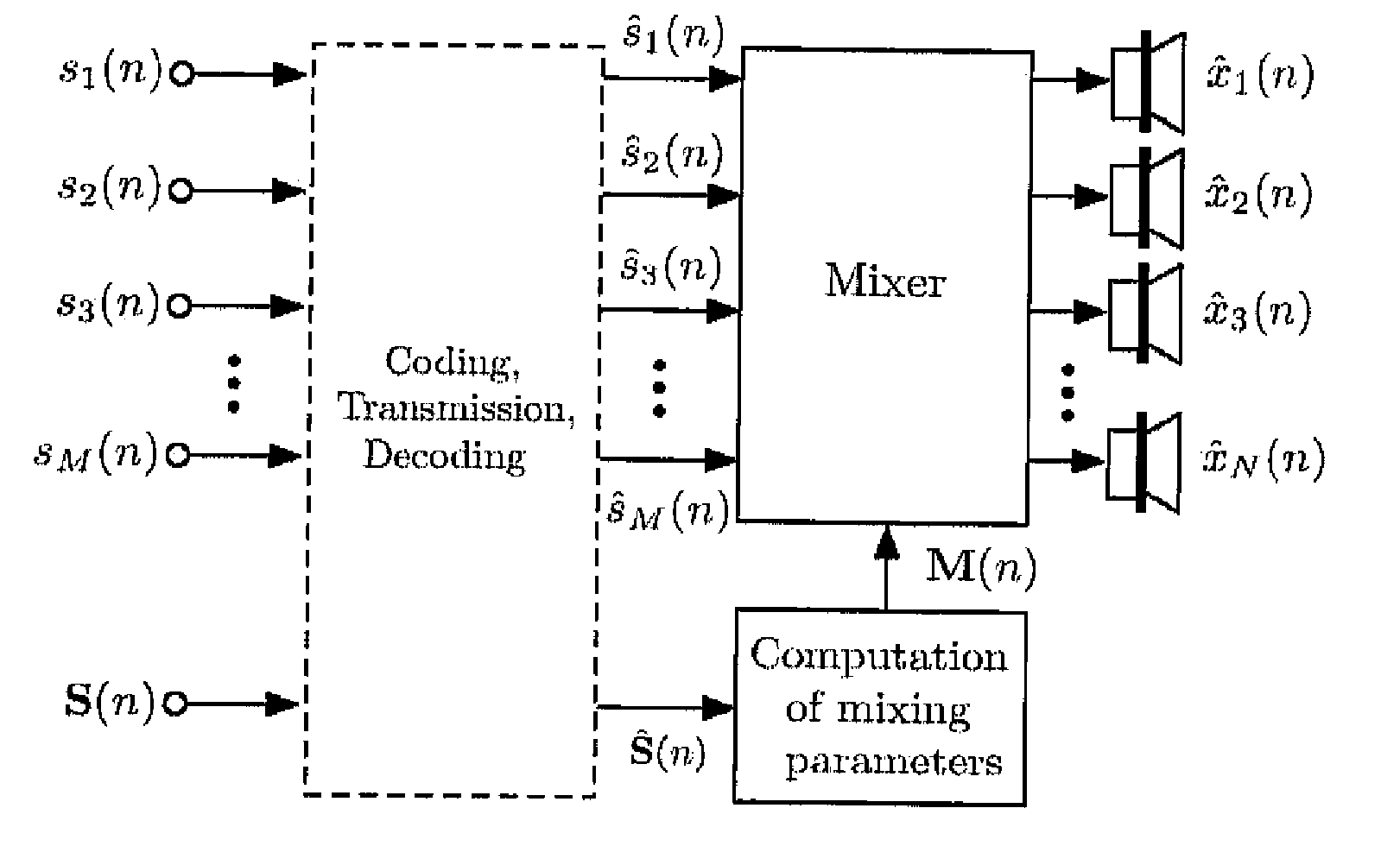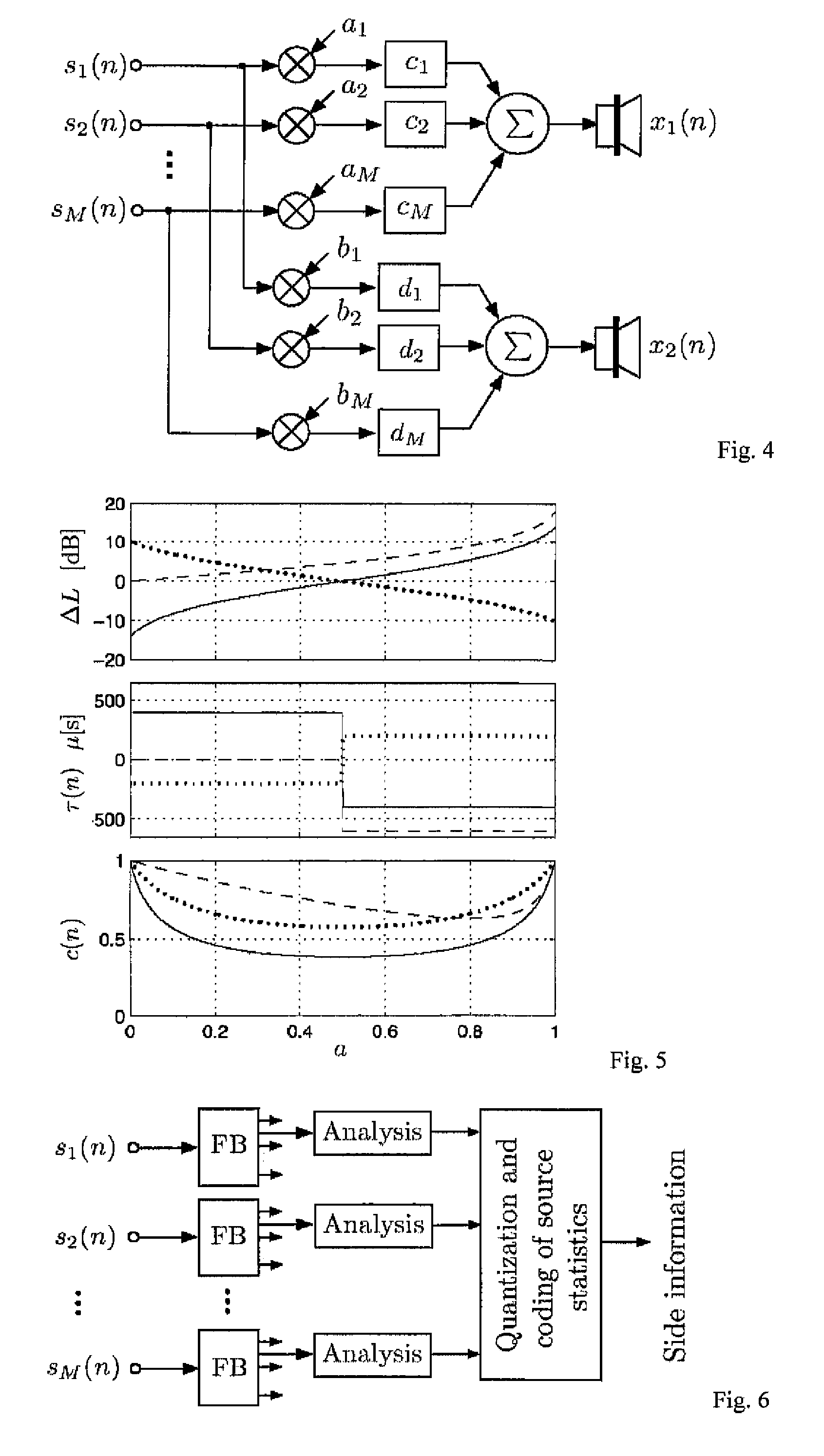Parametric joint-coding of audio sources
a technology of audio sources and parametric joints, applied in the field of parametric joint-coding of audio sources, can solve problems such as mono audio signals
- Summary
- Abstract
- Description
- Claims
- Application Information
AI Technical Summary
Benefits of technology
Problems solved by technology
Method used
Image
Examples
Embodiment Construction
II. Definitions, Notation, and Variables
[0027] The following notation and variables are used in this paper: [0028] n time index; [0029] i audio channel or source index; [0030] d delay index; [0031] M number of encoder input source signals; [0032] N number of decoder output channels; [0033] xi(n) mixed original source signals; [0034] {circumflex over (x)}i(n) mixed decoder output signals; [0035] si(n) encoder input source signals; [0036]ŝi(n) transmitted source signals also called pseudo-source signals; [0037] s(n) transmitted sum signal; [0038] yi(n) L-channel audio signal; (audio signal to be re-mixed); [0039] {tilde over (s)}i(k) one subband signal of si(n) (similarly defined for other signals); [0040] E {{tilde over (s)}i2(n)} short-time estimate of {tilde over (s)}i2(n) (similarly defined for other signals); [0041] ICLD inter-channel level difference; [0042] ICTD inter-channel time difference; [0043] ICC inter-channel coherence; [0044]ΔL(n) estimated subband ICLD; [0045]τ(n) est...
PUM
 Login to View More
Login to View More Abstract
Description
Claims
Application Information
 Login to View More
Login to View More - R&D
- Intellectual Property
- Life Sciences
- Materials
- Tech Scout
- Unparalleled Data Quality
- Higher Quality Content
- 60% Fewer Hallucinations
Browse by: Latest US Patents, China's latest patents, Technical Efficacy Thesaurus, Application Domain, Technology Topic, Popular Technical Reports.
© 2025 PatSnap. All rights reserved.Legal|Privacy policy|Modern Slavery Act Transparency Statement|Sitemap|About US| Contact US: help@patsnap.com



